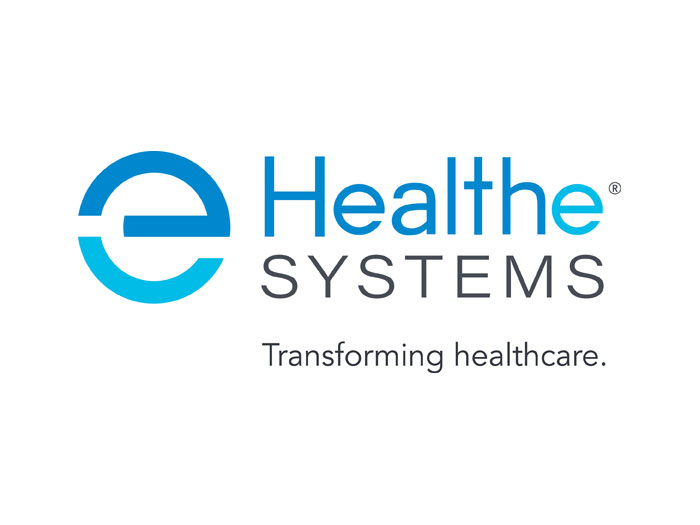Sponsored: Swiss Re Corporate Solutions
The Healthcare Liability Market Is Changing. What Risk Managers Need to Know.

It’s been a buyer’s market for healthcare liability insurance for the past decade or so. Hospitals and health systems have consistently enjoyed broad terms and conditions and declining or steady rates.
But a convergence of factors is ushering in a firming market, and risk managers should know what to expect.
“It’s time to prepare for an adjustment in the marketplace,” said Tyler Coleman, Senior Vice President and Head of Healthcare North America at Swiss Re Corporate Solutions. “Times are changing relative to what buyers have been accustomed to, which is year-over-year rate decreases and broad terms. And when things do change, they change abruptly.”
Increasing exposures, rising loss severity and reduction of capacity are some of the trends that are hitting the market.
Hard Market Driver #1: Losses Are Growing Both More Severe and More Frequent

Tyler Coleman, Senior Vice President and Head of Healthcare North America at Swiss Re Corporate Solutions
Conventional wisdom dictates that losses tend to be either high-frequency and low-severity or vice-versa. But medical malpractice claims are bucking that trend. A greater proportion of these claims are incurring severe losses, and that severity continues to climb.
Medical cost inflation contributes to rising claims costs, but those increases have been compounded by record-breaking jury verdicts. More and more, juries tend to take the side of plaintiffs who have suffered injury over large corporations, who they perceive to have significant resources.
“There’s been a change in the jury pool’s expectation of what the outcome of a given procedure should be,” Coleman said. “When plaintiffs don’t get that outcome, jurors see it as an injustice, regardless of the facts of the case.”
Some plaintiffs’ attorneys have also accelerated this trend by devoting themselves exclusively to high-severity claims.
“We’ve seen emerge a class of prosecuting attorneys with the experience and economic resources to drive larger verdicts,” Coleman said. Big awards in high-risk venues are driving up average loss values nationwide.
Hard Market Driver #2: Hospitals Are Getting Bigger, and So Are Their Risk Profiles

Healthcare systems’ risk profiles look very different today than they did prior to the passing of the Affordable Care Act. Hospital consolidation and the employment of once-independent physicians — driven by ACA incentives to eliminate costs and duplication of care — create greater professional liability exposure for health care organizations.
“Historically, physicians by and large were not a part of hospitals’ insurance programs. They were separately insured,” Coleman said. “But by employing these physicians, hospitals take on that exposure. Today, about 40 percent of physicians practice independently; that figure used to be 80 percent. So the exposure growth is significant.”
Increased exposure also comes from a larger patient population spanning wider geographies, and a shortage of doctors available to treat them. As people live longer and the population ages, healthcare utilization goes up. Meanwhile, fewer people are choosing to become doctors.
Stretched to capacity, existing physicians are more vulnerable to fatigue and error.
Hard Market Driver #3: Liability Insurance Capacity is Eroding
The confluence of elevated risk profiles and larger losses has forced carriers to re-evaluate their stance in the healthcare liability market.
“We’ve seen markets pull back in a variety of fashions, either completely exiting lines of business or re-underwriting their portfolio, reconsidering the amount of capacity they are willing to expose, and what rate they want to achieve,” Coleman said.
Unexpected larger losses drive reserve deficiency – a reversal of a years-long trend wherein healthcare liability insurers typically enjoyed reserve redundancy.
“As the allocation of third-party capital increased in the property market over the past decade, (re)insurers redeployed their capital into casualty lines of business,” Coleman said. “Now that significant losses are developing, insurers are seeing very low or negative ROE’s that appear not to be sustainable, which may lead to a greater reduction of capacity.”
“Increasing loss values and greater exposures have certainly driven some of the decisions being made market-wide in terms of managing net capacity, attachment points and premiums,” Coleman said.
To Prepare for Changes, Risk Managers Need a Reliable Carrier
What can risk managers do to prepare?
“I would be very aware of the financial strength and diversity of my insurer, understand their commitment to and expertise in this line of business, and focusing on forging long-term relationships with them,” Coleman said.
“You want an insurer who is willing to work with you and has the capability to offer stability in terms, conditions and pricing.”
Swiss Re Corporate Solutions has been committed to the healthcare industry for over 25 years, providing healthcare’s signature liability protection, medical malpractice insurance.
“There has not been a time when we exited this line of business,” Coleman said.
Corporate Solutions rounds out its product offering with risk engineering and claims expertise. The Corporate Solutions risk engineering experts continually share risk avoidance guidelines and strategies through multiple formats that include webinars, focused risk analysis with tailor-made recommendations to mitigate liability exposure, and research on specific subject matter, case law and/or regulatory issues. They also can provide healthcare risk management educational presentations and staff training.
Governed by the Swiss Re Corporate Solutions’ Claims Commitment, dedicated industry in-house claims professionals — who understand that how a claim is handled can be as important as the outcome itself — work closely with clients throughout the claim lifecycle.
“And of course we ensure that policies are issued and claims are responded to in a timely manner,” Coleman said. “After all, what we’re selling is the promise to pay a claim.” With an AA- rating from Standard & Poor’s, an A+ rating from A.M. Best and an Aa3 rating from Moody’s, clients can trust in the insurer’s ability to deliver on that promise.
“In Swiss Re Corporate Solutions, our clients have a carrier willing to stay by their side in a consistent manner after a big loss — which everyone experiences eventually — and then help mitigate that loss going forward,” Coleman said.
To learn more, visit http://www.corporatesolutions.swissre.com.
Insurance products underwritten by Westport Insurance Corporation, Overland Park, Kansas, a member of Swiss Re Corporate Solutions. This article is intended to be used for general informational purposes only and is not to be relied upon or used for any particular purpose. Swiss Re shall not be held responsible in any way for, and specifically disclaims any liability arising out of or in any way connected to, reliance on or use of any of the information contained or referenced in this article. The information contained or referenced in this article is not intended to constitute and should not be considered legal, accounting or professional advice, nor shall it serve as a substitute for the recipient obtaining such advice.
This article was produced by the R&I Brand Studio, a unit of the advertising department of Risk & Insurance, in collaboration with Swiss Re Corporate Solutions. The editorial staff of Risk & Insurance had no role in its preparation.










